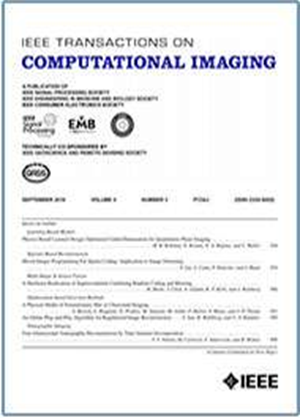环视平面:端到端2D实时NLOS成像
IF 4.8
2区 计算机科学
Q2 ENGINEERING, ELECTRICAL & ELECTRONIC
引用次数: 0
摘要
时间门控非视距(NLOS)成像方法通过反演在可见表面测量的间接光子的光路来重建隐藏在角落周围的场景。然而,这些方法受到复杂、耗时的校准过程的阻碍,校准过程涉及昂贵的捕获硬件。模拟合成三维场景中的瞬态光传输已经成为NLOS成像方法分析和基准测试的一种强大但计算密集型的替代方法。NLOS成像方法的计算复杂度也很高。在我们的工作中,我们依靠降维为NLOS成像性能分析提供了一个实时仿真框架。我们扩展了自包含二维世界中的稳态光传输,通过在二维世界中重新表述瞬态路径积分来考虑时间分辨照明的传播。我们将其与最近的NLOS成像相场公式相结合,以提供端到端模拟和成像管道,其中包含不同的NLOS成像相机模型。我们的管道产生实时NLOS图像和逐步改进的光传输模拟。我们允许对广泛的场景,渲染和NLOS成像参数进行全面控制,提供有效的实时分析它们对重建质量的影响。我们通过验证现有3D NLOS成像实验的2D对立物来说明我们的管道的有效性,并提供了对成像性能的广泛分析,包括更广泛的NLOS成像条件,如滤波,反射率和NLOS成像设置中的几何特征。本文章由计算机程序翻译,如有差异,请以英文原文为准。
Looking Around Flatland: End-to-End 2D Real-Time NLOS Imaging
Time-gated non-line-of-sight (NLOS) imaging methods reconstruct scenes hidden around a corner by inverting the optical path of indirect photons measured at visible surfaces. These methods are, however, hindered by intricate, time-consuming calibration processes involving expensive capture hardware. Simulation of transient light transport in synthetic 3D scenes has become a powerful but computationally-intensive alternative for analysis and benchmarking of NLOS imaging methods. NLOS imaging methods also suffer from high computational complexity. In our work, we rely on dimensionality reduction to provide a real-time simulation framework for NLOS imaging performance analysis. We extend steady-state light transport in self-contained 2D worlds to take into account the propagation of time-resolved illumination by reformulating the transient path integral in 2D. We couple it with the recent phasor-field formulation of NLOS imaging to provide an end-to-end simulation and imaging pipeline that incorporates different NLOS imaging camera models. Our pipeline yields real-time NLOS images and progressive refinement of light transport simulations. We allow comprehensive control on a wide set of scene, rendering, and NLOS imaging parameters, providing effective real-time analysis of their impact on reconstruction quality. We illustrate the effectiveness of our pipeline by validating 2D counterparts of existing 3D NLOS imaging experiments, and provide an extensive analysis of imaging performance including a wider set of NLOS imaging conditions, such as filtering, reflectance, and geometric features in NLOS imaging setups.
求助全文
通过发布文献求助,成功后即可免费获取论文全文。
去求助
来源期刊

IEEE Transactions on Computational Imaging
Mathematics-Computational Mathematics
CiteScore
8.20
自引率
7.40%
发文量
59
期刊介绍:
The IEEE Transactions on Computational Imaging will publish articles where computation plays an integral role in the image formation process. Papers will cover all areas of computational imaging ranging from fundamental theoretical methods to the latest innovative computational imaging system designs. Topics of interest will include advanced algorithms and mathematical techniques, model-based data inversion, methods for image and signal recovery from sparse and incomplete data, techniques for non-traditional sensing of image data, methods for dynamic information acquisition and extraction from imaging sensors, software and hardware for efficient computation in imaging systems, and highly novel imaging system design.
 求助内容:
求助内容: 应助结果提醒方式:
应助结果提醒方式:


